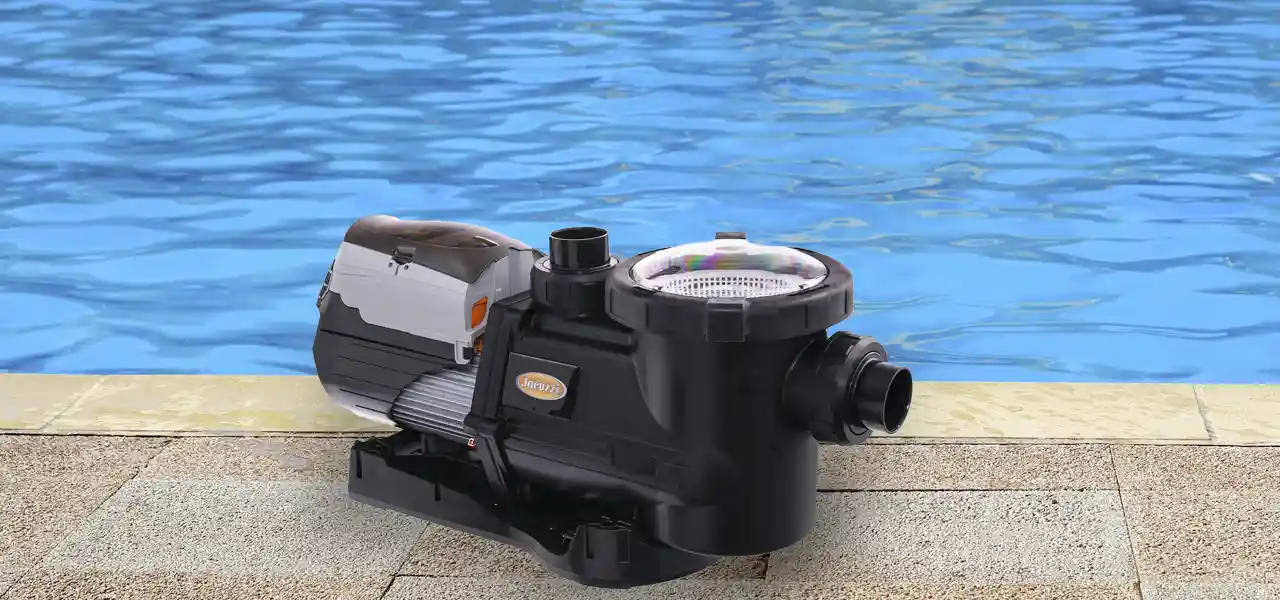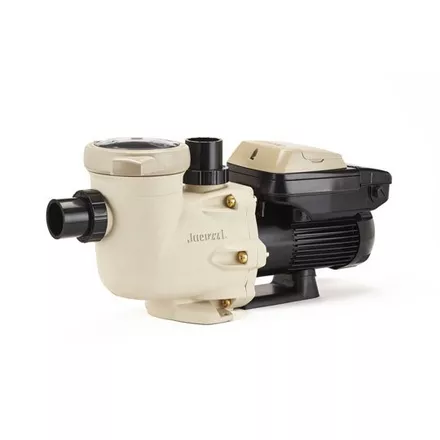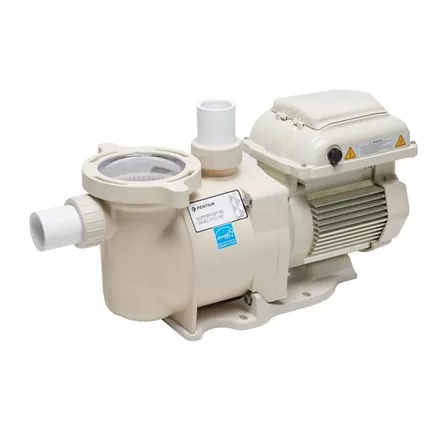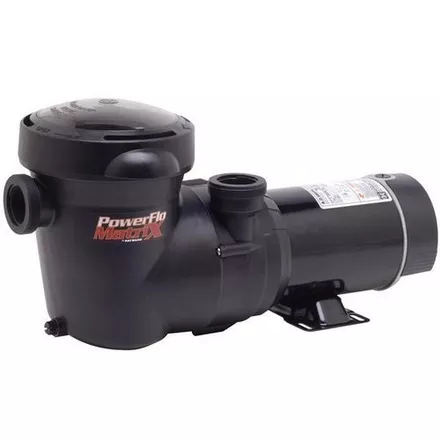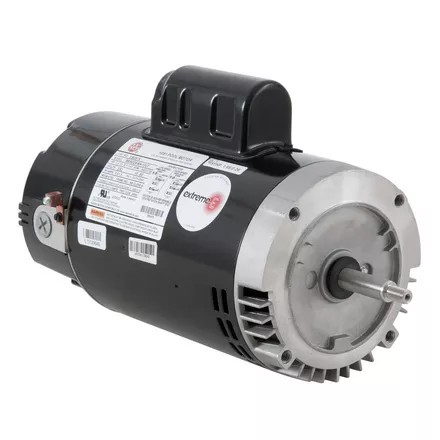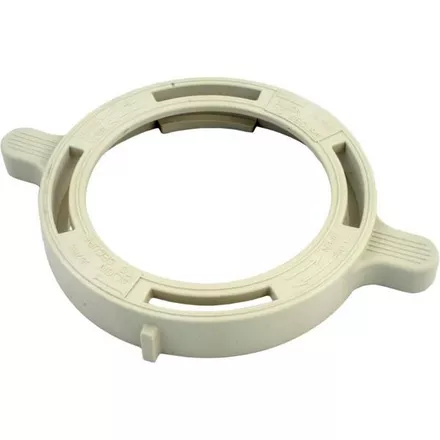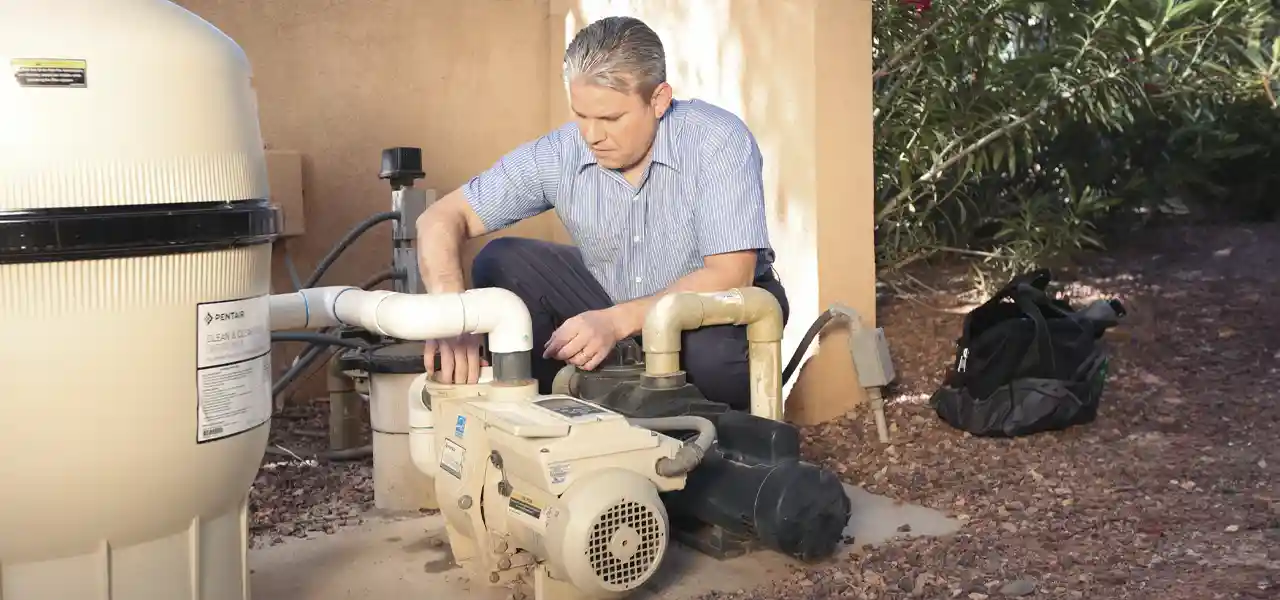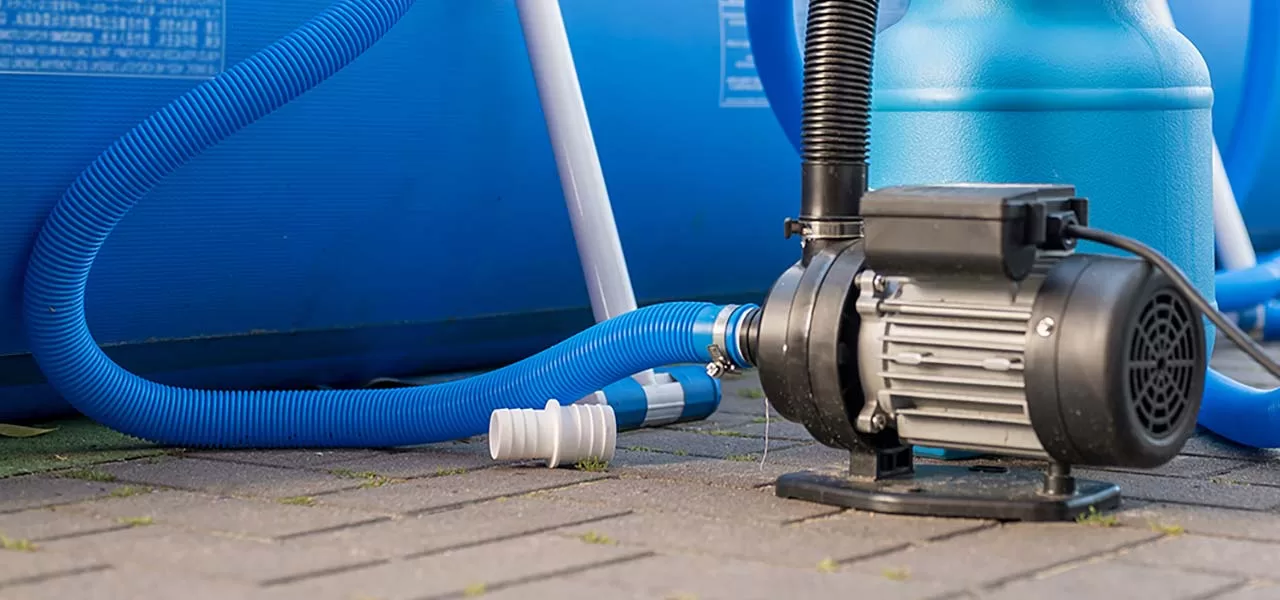A pump impeller sits behind the pump basket in the part of the pool pump called the Volute (aka Impeller Housing). The pump basket is in place to prevent small debris from entering the volute, and possibly clogging the impeller. Even with the pump basket in place, very small debris can pass through the pump basket, and clog the impeller.
How Does a Pump Impeller Get Clogged?

Nearly anything can clog a pump impeller, if it is the right size. Very small grains of sand, for example, will pass right through. Larger debris is trapped in the pump basket. Only debris of the right size — too small for the pump basket, but too big for the pump impeller — will clog your impeller. Here are a few examples:
- Pine needles
- Flowering tree stamens
- Small seeds
- Grass clippings
- Small pebbles
- Chunks of pool plaster
Most impellers nowadays are known as ‘closed vane’ impellers, which has a cover on the front of the impeller, to create the suction and draw the water in and out of the pump. Open vane impellers, also called vortex impellers, clog very rarely – but these types of impellers are only seen on old brass pool pumps, or large trash pumps.
In front of the impeller is often a diffuser, also called an impeller shroud, screwed on to the seal plate, covering the impeller, to create the proper hydraulics to produce the suction and pressure. Your pump may also have an impeller wear ring that fits over the impeller.
How to Tell if Your Pump Impeller is Clogged
- The pump is making cavitation noises — loud, low grinding noise.
- The filter pressure is about half of what it normally reads.
- The pump basket doesn’t fill up with water (as seen through a clear lid).
- The water in the pump is slowly moving, or swirling.
- The water flow is diminished or lower than normal.
Or it could be something else…
- Air leak before the pump, usually on the pipe that screws into the pump.
- Closed valves on the suction side (main drain, skimmers).
- Clogged or collapsed skimmer pipes.
- Loose pump lid, loose pump drain plugs.
- Very dirty pool filter, or valves closed on return side.
How to Clean a Clogged Pool Pump Impeller
Turn off pump at the breaker. Remove the pump basket and try to reach the impeller with a small piece of wire or just your fingers. Use a swirling motion to dislodge debris, then scoop out by hand.
Reassemble and turn on pump. You may have cleaned it, but if symptoms continue, you’ll need to dig deeper and disassemble the pump, to gain access to the impeller.
- Separate the volute, by removing the clamp band or 6-8 bolts that hold the seal plate to the volute. Don’t mistakenly remove the 4 motor bolts.
- Pull the motor straight back (it may be HOT), to separate the pump, and stand the motor on end, to look into the impeller.
- Remove the diffuser or impeller shroud if present, to expose the impeller.
- Use a very small but long screwdriver, or piece of strong wire, or needle nose pliers to clean the impeller
- For small rocks or seeds that are stuck in the vanes, use wire to push them back towards the center opening.
How to Prevent a Clogged Pool Pump Impeller
- Don’t run the pump without the pump basket in place.
- Some pump baskets lock into place with a twisting motion.
- Use skimmer socks during the time of year when your impeller clogs (usually spring time).
- Trim back offending trees or bushes, or otherwise manage the debris.
- Use a nylon knee sock, or foot of a pair of panty hose (ask first!) to line the inside of your pump basket.
Clogged impellers are common in the springtime, when small spring debris is flying off of the trees. Some pumps (such as the Ultra-Flo or Challenger) seem to have more trouble than other pumps with clogged impellers. It’s important to identify and correct the situation quickly, or your water quality will suffer, because your flow rate has been reduced by 50-80%.

